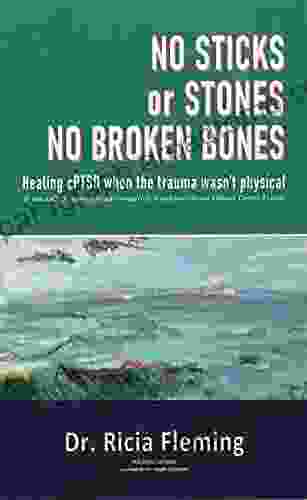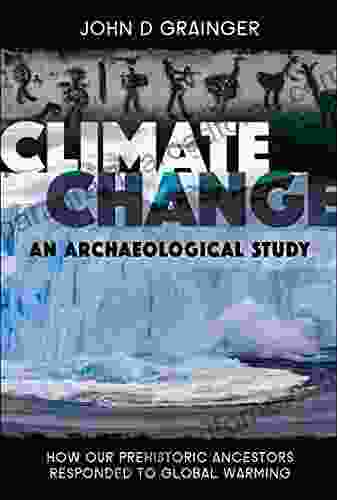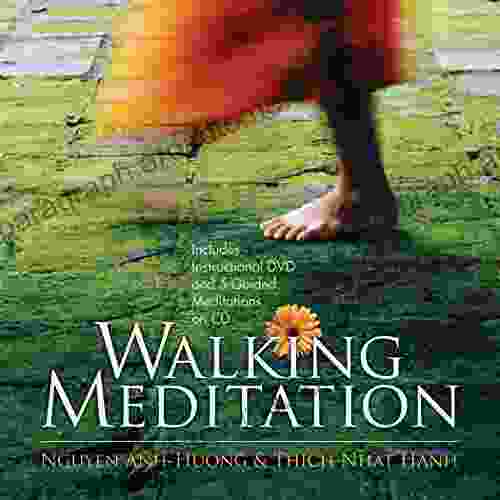How Our Prehistoric Ancestors Responded to Global Warming: An Archaeological Perspective

Climate change is a defining issue of our time, and its effects are being felt around the world. Rising sea levels, increasingly extreme weather events, and changing ecosystems are all having a profound impact on human societies. This is not the first time that humans have faced a changing climate. Over the course of our long evolutionary history, our ancestors have repeatedly had to adapt to new environmental challenges, including periods of global warming.
Archaeological research can provide valuable insights into how prehistoric humans responded to climate change. By studying the archaeological record, we can learn about the strategies that our ancestors used to cope with environmental challenges and the lessons that we can learn from their experiences.
In this article, we will explore the archaeological evidence for how prehistoric humans responded to global warming. We will begin by examining the earliest evidence of human adaptation to climate change, during the Pleistocene epoch. We will then discuss the archaeological evidence for climate change during the Holocene epoch, and how prehistoric humans responded to these changes. Finally, we will consider the implications of this research for our understanding of climate change and its impact on human societies today.
4 out of 5
| Language | : | English |
| File size | : | 73181 KB |
| Text-to-Speech | : | Enabled |
| Screen Reader | : | Supported |
| Enhanced typesetting | : | Enabled |
| Word Wise | : | Enabled |
| Print length | : | 293 pages |
| Lending | : | Enabled |
The Pleistocene epoch was a period of time that lasted from 2.6 million years ago to 11,700 years ago. During this time, the Earth's climate was much more variable than it is today. There were periods of intense cold, known as glacial periods, and periods of relative warmth, known as interglacial periods.
The archaeological record shows that prehistoric humans were able to adapt to these changing environmental conditions. During glacial periods, humans lived in caves and other sheltered areas. They hunted large mammals, such as mammoths and woolly rhinoceroses, and they gathered plants and fruits. During interglacial periods, humans expanded their range into new areas and began to develop new technologies, such as agriculture.
One of the most important adaptations that prehistoric humans made to climate change was the development of clothing. Clothing allowed humans to stay warm in cold climates and to protect themselves from the sun in hot climates. Clothing also helped to protect humans from insects and other pests.
Another important adaptation that prehistoric humans made to climate change was the development of fire. Fire allowed humans to cook food, heat their homes, and keep predators away. Fire also helped to clear land for agriculture and to create new habitats.
The archaeological record shows that prehistoric humans were able to adapt to the changing climate of the Pleistocene epoch through a combination of behavioral and technological adaptations. They were able to find new sources of food and shelter, and they developed new technologies to help them survive in a changing environment.
The Holocene epoch is the current geological epoch, and it began 11,700 years ago. The Holocene epoch has been a period of relatively stable climate, but there have been some significant fluctuations in temperature and precipitation.
During the early Holocene, the world's climate was warm and wet. This led to the rise of agriculture, which allowed humans to settle down in one place and build permanent settlements. However, the climate of the Holocene has not been entirely stable. There have been periods of drought, flood, and extreme cold.
The archaeological record shows that prehistoric humans were able to adapt to the changing climate of the Holocene epoch. They developed new agricultural techniques, such as irrigation and terracing, to cope with drought. They also built dams and canals to control flooding. And they developed new ways to store food, such as drying and smoking, to cope with periods of famine.
One of the most important adaptations that prehistoric humans made to climate change was the development of trade. Trade allowed humans to obtain goods and services that they could not produce themselves. For example, people in cold climates could trade with people in warm climates for food and clothing. And people in arid climates could trade with people in humid climates for water and other resources.
The archaeological record shows that prehistoric humans were able to adapt to the changing climate of the Holocene epoch through a combination of behavioral, technological, and economic adaptations. They were able to develop new ways to produce food, to control water resources, and to trade with each other. These adaptations allowed humans to survive and thrive in a changing climate.
The archaeological record shows that prehistoric humans were able to adapt to climate change through a combination of behavioral, technological, and economic adaptations. They were able to find new sources of food and shelter, and they developed new technologies to help them survive in a changing environment. They also developed new ways to trade with each other, which allowed them to obtain goods and services that they could not produce themselves.
The lessons that we can learn from our prehistoric ancestors are invaluable as we face the challenges of climate change today. We can learn from their ingenuity, their resilience, and their ability to adapt to new environmental conditions. By studying the archaeological record, we can better understand the challenges that we face and the strategies that we can use to overcome them.
Here are some specific lessons that we can learn from prehistoric humans:
- Be adaptable. Prehistoric humans were able to adapt to a wide range of environmental conditions. They were able to find new sources of food and shelter, and they developed new technologies to help them survive in a changing environment. We need to be just as adaptable as we face the challenges of climate change.
- Be resourceful. Prehistoric humans were able to use the resources that they had to meet their needs. They were able to find new ways to produce food, to control water resources, and to trade with each other. We need to be just as resourceful as we face the challenges of climate change.
- Be cooperative. Prehistoric humans worked together to overcome the challenges that they faced. They shared food, resources, and knowledge. We need to work together just as closely as we face the challenges of climate change.
By learning from our prehistoric ancestors, we can better prepare ourselves for the challenges of climate change. We can be adaptable, resourceful, and cooperative. And we can work together to create a more sustainable future.
The archaeological record shows that prehistoric humans were able to adapt to climate change through a combination of behavioral, technological, and economic adaptations. They were able to find new sources of food and shelter, and they developed new technologies to help them survive in a changing environment. They also developed new ways to trade with each other, which allowed them to obtain goods and services that they could not produce themselves.
The lessons that we can learn from our prehistoric ancestors are invaluable as we face the challenges of climate change today. We can learn from their ingenuity, their resilience, and their ability to adapt to new environmental conditions. By studying the archaeological record, we can better understand the challenges that we face and the strategies that we can use to overcome them.
4 out of 5
| Language | : | English |
| File size | : | 73181 KB |
| Text-to-Speech | : | Enabled |
| Screen Reader | : | Supported |
| Enhanced typesetting | : | Enabled |
| Word Wise | : | Enabled |
| Print length | : | 293 pages |
| Lending | : | Enabled |
Do you want to contribute by writing guest posts on this blog?
Please contact us and send us a resume of previous articles that you have written.
 Book
Book Novel
Novel Page
Page Chapter
Chapter Text
Text Story
Story Genre
Genre Reader
Reader Library
Library Paperback
Paperback E-book
E-book Magazine
Magazine Newspaper
Newspaper Paragraph
Paragraph Sentence
Sentence Bookmark
Bookmark Shelf
Shelf Glossary
Glossary Bibliography
Bibliography Foreword
Foreword Preface
Preface Synopsis
Synopsis Annotation
Annotation Footnote
Footnote Manuscript
Manuscript Scroll
Scroll Codex
Codex Tome
Tome Bestseller
Bestseller Classics
Classics Library card
Library card Narrative
Narrative Biography
Biography Autobiography
Autobiography Memoir
Memoir Reference
Reference Encyclopedia
Encyclopedia Paige Braddock
Paige Braddock Jere Van Dyk
Jere Van Dyk Jillian Venters
Jillian Venters John Boyanoski
John Boyanoski Jinx Schwartz
Jinx Schwartz John Edgell
John Edgell Jenny Rinkinen
Jenny Rinkinen Natalie K Martin
Natalie K Martin Sir E A Wallis Budge
Sir E A Wallis Budge Tony Lyons
Tony Lyons John G Jackson
John G Jackson Jess P Shatkin
Jess P Shatkin Rosamond Mckitterick
Rosamond Mckitterick John B Hudson
John B Hudson Sabrina Rose
Sabrina Rose Joel Peterson
Joel Peterson Jeremy Taylor
Jeremy Taylor Jim Mccarty
Jim Mccarty Jenny Reardon
Jenny Reardon Jessica A Kurr
Jessica A Kurr
Light bulbAdvertise smarter! Our strategic ad space ensures maximum exposure. Reserve your spot today!

 Danny SimmonsUnlock the Secrets of Earth's Crust: Principles of Igneous and Metamorphic...
Danny SimmonsUnlock the Secrets of Earth's Crust: Principles of Igneous and Metamorphic...
 Dalton FosterRegaining Balance: A Comprehensive Guide to Restoring Emotional and Physical...
Dalton FosterRegaining Balance: A Comprehensive Guide to Restoring Emotional and Physical... Kirk HayesFollow ·3.3k
Kirk HayesFollow ·3.3k Jacob FosterFollow ·8k
Jacob FosterFollow ·8k Josh CarterFollow ·4.3k
Josh CarterFollow ·4.3k Junot DíazFollow ·15.3k
Junot DíazFollow ·15.3k Jorge Luis BorgesFollow ·9.8k
Jorge Luis BorgesFollow ·9.8k Eugene PowellFollow ·12.6k
Eugene PowellFollow ·12.6k Gregory WoodsFollow ·9.1k
Gregory WoodsFollow ·9.1k Harvey HughesFollow ·8.9k
Harvey HughesFollow ·8.9k

 Julio Cortázar
Julio CortázarAn Illustrated Encyclopedia Of Live Concerts And...
Immerse yourself in the...

 Edgar Cox
Edgar CoxNon Physically Assaultive Attachment Based Chronic Covert...
What is Covert...

 Robert Reed
Robert ReedThe Baseball of Why: Unraveling the Intricacies of...
Step up to the plate and...

 Aldous Huxley
Aldous HuxleyTacos and Beer: An Atmosphere of Flavorful Delights
In the realm of culinary adventures,...

 Stan Ward
Stan WardUnlock the Secrets of the Aramaic Jesus: Revelations of a...
Journey Back to the Roots of...

 Vincent Mitchell
Vincent MitchellMillionaire Success Strategies: Your Blueprint for...
Unlock the...
4 out of 5
| Language | : | English |
| File size | : | 73181 KB |
| Text-to-Speech | : | Enabled |
| Screen Reader | : | Supported |
| Enhanced typesetting | : | Enabled |
| Word Wise | : | Enabled |
| Print length | : | 293 pages |
| Lending | : | Enabled |








